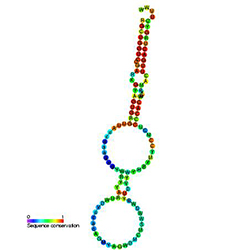현재 위치:홈 > 뉴스현황 > Press Events > Immunotherapy Approa...
저자: 업로드:2017-08-02 조회수:
A cancer of the blood and bone marrow, leukemia occurs most frequently in adults over 55 years of age, but is also the most common childhood cancer in patients less than 15 years old. There are four main types of leukemia: acute myeloid leukemia (AML), acute lymphocytic leukemia (ALL), chronic myeloid leukemia (CML), and chronic lymphocytic leukemia (CLL), each named for the rate at which the disease develops and worsens as well as the affected blood cell type.
Y RNA is a reason why monocytes and macrophages assist, rather than assault, the cancer cells that proliferate in chronic lymphocytic leukemia (CLL). Not much is known about Y RNA, but one particular Y RNA, hy4, has been found in great abundance in the plasma of CLL patients. This discovery, from the German Cancer Research Center (GCR) in Heidelberg, points to a link between Y RNA and CLL’s immunosuppressive character. Breaking this link, say the GCR researchers, could lead to new therapeutic approaches against CLL.
The key to the discovery was exosome analysis. Exosomes, little bubbles, or vesicles, that cells transmit to their surroundings, are released in elevated numbers by leukemia cells. Accordingly, they attracted the notice of the GCR team, which was led by molecular geneticist Martina Seiffert, Ph.D. Ultimately, the GCR scientists found that the exosomes contained, among other things, Y RNA.
This finding appeared in the journal Science Immunology, in an article entitled “Tumor-Derived Exosomes Modulate PD-L1 Expression in Monocytes.” The article also explains how CLL-derived exosomal RNAs promote monocytes in CLL patients to adopt an immunosuppressive phenotype, including promoting expression of programmed death-ligand 1 (PD-L1).

“We carried out RNA sequencing and proteome analyses of CLL-derived exosomes and identified noncoding Y RNA hY4 as a highly abundant RNA species that is enriched in exosomes from plasma of CLL patients compared with healthy donor samples,” wrote the article’s authors. “Transfer of CLL-derived exosomes or hY4 alone to monocytes resulted in key CLL-associated phenotypes, including the release of cytokines, such as C-C motif chemokine ligand 2 (CCL2), CCL4, and interleukin-6, and the expression of PD-L1.”
The CDR scientists also observed that monocyte responses to hy4 were abolished in Toll-like receptor 7 (TLR7)-deficient monocytes. This finding, the scientists say, indicates that exosomal hY4 may be a driver of TLR7 signaling. “Pharmacologic inhibition of endosomal TLR signaling,” the article’s authors added, “resulted in a substantially reduced activation of monocytes in vitro and attenuated CLL development in vivo.”